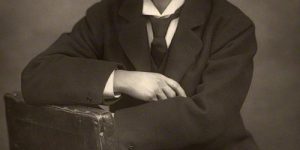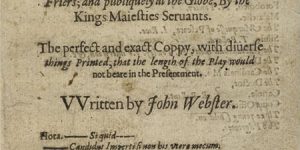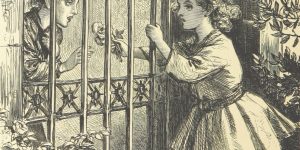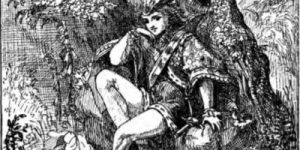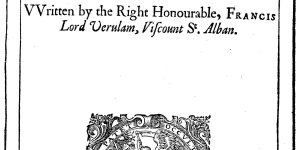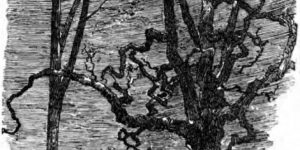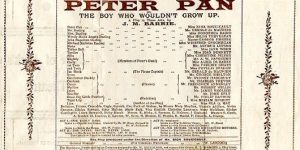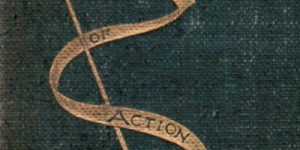The Great Boer War by Arthur Conan Doyle
The Great Boer War Preface To The Final Edition
The Great Boer War Chapter I. The Boer Nations
The Great Boer War Chapter II. The Cause Of Quarrel
The Great Boer War Chapter III. The Negotiations
The Great Boer War Chapter IV. The Eve Of War
The Great Boer War Chapter V. Talana Hill
The Great Boer War Chapter VI. Elandslaagte And Rietfontein
The Great Boer War Chapter VII. The Battle Of Ladysmith
The Great Boer War Chapter VIII. Lord Methuen’s Advance
The Great Boer War Chapter IX. Battle Of Magersfontein
The Great Boer War Chapter X. The Battle Of Stormberg
The Great Boer War Chapter XI. Battle Of Colenso
The Great Boer War Chapter XII. The Dark Hour
The Great Boer War Chapter XIII. The Siege Of Ladysmith
The Great Boer War Chapter XIV. The Colesberg Operations
The Great Boer War Chapter XV. Spion Kop
The Great Boer War Chapter XVI. Vaalkranz
The Great Boer War Chapter XVII. Buller’s Final Advance
The Great Boer War Chapter XVIII. The Siege And Relief Of Kimberley
The Great Boer War Chapter XIX. Paardeberg
The Great Boer War Chapter XX. Roberts’s Advance On Bloemfontein
The Great Boer War Chapter XXI. Strategic Effects Of Lord Roberts’s March
The Great Boer War Chapter XXII. The Halt At Bloemfontein
The Great Boer War Chapter XXIII. The Clearing Of The South-East
The Great Boer War Chapter XXIV. The Siege Of Mafeking
The Great Boer War Chapter XXV. The March On Pretoria
The Great Boer War Chapter XXVI. Diamond Hill—Rundle’s Operations
The Great Boer War Chapter XXVII. The Lines Of Communication
The Great Boer War Chapter XXVIII. The Halt At Pretoria
The Great Boer War Chapter XXIX. The Advance To Komatipoort
The Great Boer War Chapter XXX. The Campaign Of De Wet
The Great Boer War Chapter XXXI. The Guerilla Warfare In The Transvaal: Nooitgedacht
The Great Boer War Chapter XXXII. The Second Invasion Of Cape Colony
The Great Boer War Chapter XXXIII. The Northern Operations From January To April, 1901
The Great Boer War Chapter XXXIV. The Winter Campaign (April To September, 1901)
The Great Boer War Chapter XXXV. The Guerilla Operations In Cape Colony
The Great Boer War Chapter XXXVI. The Spring Campaign (September To December, 1901)
The Great Boer War Chapter XXXVII. The Campaign Of January To April, 1902
The Great Boer War Chapter XXXVIII. De La Rey’s Campaign Of 1902
The Great Boer War Chapter XXXIX. The End
The Great Boer War Chapter XXX. The Campaign Of De Wet
It had been hoped that the dispersal of the main Boer army, the capture of its guns and the expulsion of many both of the burghers and of the foreign mercenaries, would have marked the end of the war. These expectations were, however, disappointed, and South Africa was destined to be afflicted and the British Empire disturbed by a useless guerilla campaign. After the great and dramatic events which characterised the earlier phases of the struggle between the Briton and the Boer for the mastery of South Africa it is somewhat of the nature of an anticlimax to turn one’s attention to those scattered operations which prolonged the resistance for a turbulent year at the expense of the lives of many brave men on either side. These raids and skirmishes, which had their origin rather in the hope of vengeance than of victory, inflicted much loss and misery upon the country, but, although we may deplore the desperate resolution which bids brave men prefer death to subjugation, it is not for us, the countrymen of Hereward or Wallace, to condemn it.
In one important respect these numerous, though trivial, conflicts differed from the battles in the earlier stages of the war. The British had learned their lesson so thoroughly that they often turned the tables upon their instructors. Again and again the surprise was effected, not by the nation of hunters, but by those rooineks whose want of cunning and of veld-craft had for so long been a subject of derision and merriment. A year of the kopje and the donga had altered all that. And in the proportion of casualties another very marked change had occurred. Time was when in battle after battle a tenth would have been a liberal estimate for the losses of the Boers compared with those of the Briton. So it was at Stormberg; so it was at Colenso; so it may have been at Magersfontein. But in this last stage of the war the balance was rather in favour of the British. It may have been because they were now frequently acting on the defensive, or it may have been from an improvement in their fire, or it may have come from the more desperate mood of the burghers, but in any case the fact remains that every encounter diminished the small reserves of the Boers rather than the ample forces of their opponents.
One other change had come over the war, which caused more distress and searchings of conscience among some of the people of Great Britain than the darkest hours of their misfortunes. This lay in the increased bitterness of the struggle, and in those more strenuous measures which the British commanders felt themselves entitled and compelled to adopt. Nothing could exceed the lenity of Lord Roberts’s early proclamations in the Free State. But, as the months went on and the struggle still continued, the war assumed a harsher aspect. Every farmhouse represented a possible fort, and a probable depot for the enemy. The extreme measure of burning them down was only carried out after a definite offence, such as affording cover for snipers, or as a deterrent to railway wreckers, but in either case it is evident that the women or children who were usually the sole occupants of the farm could not by their own unaided exertions prevent the line from being cut or the riflemen from firing. It is even probable that the Boers may have committed these deeds in the vicinity of houses the destruction of which they would least regret. Thus, on humanitarian grounds there were strong arguments against this policy of destruction being pushed too far, and the political reasons were even stronger, since a homeless man is necessarily the last man to settle down, and a burned-out family the last to become contented British citizens. On the other hand, the impatience of the army towards what they regarded as the abuses of lenity was very great, and they argued that the war would be endless if the women in the farm were allowed always to supply the sniper on the kopje. The irregular and brigand-like fashion in which the struggle was carried out had exasperated the soldiers, and though there were few cases of individual outrage or unauthorised destruction, the general orders were applied with some harshness, and repressive measures were taken which warfare may justify but which civilisation must deplore.
After the dispersal of the main army at Komatipoort there remained a considerable number of men in arms, some of them irreconcilable burghers, some of them foreign adventurers, and some of them Cape rebels, to whom British arms were less terrible than British law. These men, who were still well armed and well mounted, spread themselves over the country, and acted with such energy that they gave the impression of a large force. They made their way into the settled districts, and brought fresh hope and fresh disaster to many who had imagined that the war had passed for ever away from them. Under compulsion from their irreconcilable countrymen, a large number of the farmers broke their parole, mounted the horses which British leniency had left with them, and threw themselves once more into the struggle, adding their honour to the other sacrifices which they had made for their country. In any account of the continual brushes between these scattered bands and the British forces, there must be such a similarity in procedure and result, that it would be hard for the writer and intolerable for the reader if they were set forth in detail. As a general statement it may be said that during the months to come there was no British garrison in any one of the numerous posts in the Transvaal, and in that portion of the Orange River Colony which lies east of the railway, which was not surrounded by prowling riflemen, there was no convoy sent to supply those garrisons which was not liable to be attacked upon the road, and there was no train upon any one of the three lines which might not find a rail up and a hundred raiders covering it with their Mausers. With some two thousand miles of railroad to guard, so many garrisons to provide, and an escort to be furnished to every convoy, there remained out of the large body of British troops in the country only a moderate force who were available for actual operations. This force was distributed in different districts scattered over a wide extent of country, and it was evident that while each was strong enough to suppress local resistance, still at any moment a concentration of the Boer scattered forces upon a single British column might place the latter in a serious position. The distribution of the British in October and November was roughly as follows. Methuen was in the Rustenburg district, Barton at Krugersdorp and operating down the line to Klerksdorp, Settle was in the West, Paget at Pienaar’s River, Clements in the Magaliesberg, Hart at Potchefstroom, Lyttelton at Middelburg, Smith-Dorrien at Belfast, W. Kitchener at Lydenburg, French in the Eastern Transvaal, Hunter, Rundle, Brabant, and Bruce Hamilton in the Orange River Colony. Each of these forces was occupied in the same sort of work, breaking up small bodies of the enemy, hunting for arms, bringing in refugees, collecting supplies, and rounding up cattle. Some, however, were confronted with organised resistance and some were not. A short account may be given in turn of each separate column.
I would treat first the operations of General Barton, because they form the best introduction to that narrative of the doings of Christian De Wet to which this chapter will be devoted.
The most severe operations during the month of October fell to the lot of this British General, who, with some of the faithful fusiliers whom he had led from the first days in Natal, was covering the line from Krugersdorp to Klerksdorp. It is a long stretch, and one which, as the result shows, is as much within striking distance of the Orange Free Staters as of the men of the Transvaal. Upon October 5th Barton left Krugersdorp with a force which consisted of the Scots and Welsh Fusiliers, five hundred mounted men, the 78th R.F.A., three pom-poms, and a 4.7 naval gun. For a fortnight, as the small army moved slowly down the line of the railroad, their progress was one continual skirmish. On October 6th they brushed the enemy aside in an action in which the volunteer company of the Scots Fusiliers gained the applause of their veteran comrades. On the 8th and 9th there was sharp skirmishing, the brunt of which on the latter date fell upon the Welsh Fusiliers, who had three officers and eleven men injured. The commandos of Douthwaite, Liebenberg, and Van der Merwe seem to have been occupied in harassing the column during their progress through the Gatsrand range. On the 15th the desultory sniping freshened again into a skirmish in which the honours and the victory belonged mainly to the Welshmen and to that very keen and efficient body, the Scottish Yeomanry. Six Boers were left dead upon the ground. On October 17th the column reached Frederickstad, where it halted. On that date six of Marshall’s Horse were cut off while collecting supplies. The same evening three hundred of the Imperial Light Horse came in from Krugersdorp.
Up to this date the Boer forces which dogged the column had been annoying but not seriously aggressive. On the 19th, however, affairs took an unexpected turn. The British scouts rode in to report a huge dust cloud whirling swiftly northwards from the direction of the Vaal River—soon plainly visible to all, and showing as it drew nearer the hazy outline of a long column of mounted men. The dark coats of the riders, and possibly the speed of their advance, showed that they were Boers, and soon it was rumoured that it was no other than Christian De Wet with his merry men, who, with characteristic audacity, had ridden back into the Transvaal in the hope of overwhelming Barton’s column.
It is some time since we have seen anything of this energetic gentleman with the tinted glasses, but as the narrative will be much occupied with him in the future a few words are needed to connect him with the past. It has been already told how he escaped through the net which caught so many of his countrymen at the time of the surrender of Prinsloo, and how he was chased at furious speed from the Vaal River to the mountains of Magaliesberg. Here he eluded his pursuers, separated from Steyn, who desired to go east to confer with Kruger, and by the end of August was back again in his favourite recruiting ground in the north of the Orange River Colony. Here for nearly two months he had lain very quiet, refitting and reassembling his scattered force, until now, ready for action once more, and fired by the hope of cutting off an isolated British force, he rode swiftly northwards with two thousand men under that rolling cloud which had been spied by the watchers of Frederickstad.
The problem before him was a more serious one, however, than any which he had ever undertaken, for this was no isolated regiment or ill-manned post, but a complete little field force very ready to do battle with him. De Wet’s burghers, as they arrived, sprang from their ponies and went into action in their usual invisible but effective fashion, covered by the fire of several guns. The soldiers had thrown up lines of sangars, however, and were able, though exposed to a very heavy fire coming from several directions, to hold their own until nightfall, when the defences were made more secure. On the 20th, 21st, 22nd, 23rd, and 24th the cordon of the attack was drawn gradually closer, the Boers entirely surrounding the British force, and it was evident that they were feeling round for a point at which an assault might be delivered.
The position of the defenders upon the morning of October 25th was as follows. The Scots Fusiliers were holding a ridge to the south. General Barton with the rest of his forces occupied a hill some distance off. Between the two was a valley down which ran the line, and also the spruit upon which the British depended for their water supply. On each side of the line were ditches, and at dawn on this seventh day of the investment it was found that these had been occupied by snipers during the night, and that it was impossible to water the animals. One of two things must follow. Either the force must shift its position or it must drive these men out of their cover. No fire could do it, as they lay in perfect safety. They must be turned out at the point of the bayonet.
About noon several companies of Scots and Welsh Fusiliers advanced from different directions in very extended order upon the ditches. Captain Baillie’s company of the former regiment first attracted the fire of the burghers. Wounded twice the brave officer staggered on until a third bullet struck him dead. Six of his men were found lying beside him. The other companies were exposed in their turn to a severe fire, but rushing onwards they closed rapidly in upon the ditches. There have been few finer infantry advances during the war, for the veld was perfectly flat and the fire terrific. A mile of ground was crossed by the fusiliers. Three gallant officers—Dick, Elliot, and Best—went down; but the rush of the men was irresistible. At the edge of the ditches the supports overtook the firing line, and they all surged into the trenches together. Then it was seen how perilous was the situation of the Boer snipers. They had placed themselves between the upper and the nether millstone. There was no escape for them save across the open. It says much for their courage that they took that perilous choice rather than wave the white flag, which would have ensured their safety.
The scene which followed has not often been paralleled. About a hundred and fifty burghers rushed out of the ditches, streaming across the veld upon foot to the spot where their horses had been secreted. Rifles, pom-poms, and shrapnel played upon them during this terrible race. ‘A black running mob carrying coats, blankets, boots, rifles, &c., was seen to rise as if from nowhere and rush as fast as they could, dropping the various things they carried as they ran.’ One of their survivors has described how awful was that wild blind flight, through a dust-cloud thrown up by the shells. For a mile the veld was dotted with those who had fallen. Thirty-six were found dead, thirty were wounded, and thirty more gave themselves up as prisoners. Some were so demoralised that they rushed into the hospital and surrendered to the British doctor. The Imperial Light Horse were for some reason slow to charge. Had they done so at once, many eye-witnesses agree that not a fugitive should have escaped. On the other hand, the officer in command may have feared that in doing so he might mask the fire of the British guns.
One incident in the action caused some comment at the time. A small party of Imperial Light Horse, gallantly led by Captain Yockney of B Squadron, came to close quarters with a group of Boers. Five of the enemy having held up their hands Yockney passed them and pushed on against their comrades. On this the prisoners seized their rifles once more and fired upon their captors. A fierce fight ensued with only a few feet between the muzzles of the rifles. Three Boers were shot dead, five wounded, and eight taken. Of these eight three were shot next day by order of court-martial for having resumed their weapons after surrender, while two others were acquitted. The death of these men in cold blood is to be deplored, but it is difficult to see how any rules of civilised warfare can be maintained if a flagrant breach of them is not promptly and sternly punished.
On receiving this severe blow De Wet promptly raised the investment and hastened to regain his favourite haunts. Considerable reinforcements had reached Barton upon the same day, including the Dublins, the Essex, Strathcona’s Horse, and the Elswick Battery, with some very welcome supplies of ammunition. As Barton had now more than a thousand mounted men of most excellent quality it is difficult to imagine why he did not pursue his defeated enemy. He seems to have underrated the effect which he had produced, for instead of instantly assuming the offensive he busied himself in strengthening his defences. Yet the British losses in the whole operations had not exceeded one hundred, so that there does not appear to have been any reason why the force should be crippled. As Barton was in direct and constant telegraphic communication with Pretoria, it is possible that he was acting under superior orders in the course which he adopted.
It was not destined, however, that De Wet should be allowed to escape with his usual impunity. On the 27th, two days after his retreat from Frederickstad he was overtaken—stumbled upon by pure chance apparently—by the mounted infantry and cavalry of Charles Knox and De Lisle. The Boers, a great disorganised cloud of horsemen, swept swiftly along the northern bank of the Vaal, seeking for a place to cross, while the British rode furiously after them, spraying them with shrapnel at every opportunity. Darkness and a violent storm gave De Wet his opportunity to cross, but the closeness of the pursuit compelled him to abandon two of his guns, one of them a Krupp and the other one of the British twelve-pounders of Sanna’s Post, which, to the delight of the gunners, was regained by that very U battery to which it belonged.
Once across the river and back in his own country De Wet, having placed seventy miles between himself and his pursuers, took it for granted that he was out of their reach, and halted near the village of Bothaville to refit. But the British were hard upon his track, and for once they were able to catch this indefatigable man unawares. Yet their knowledge of his position seems to have been most hazy, and on the very day before that on which they found him, General Charles Knox, with the main body of the force, turned north, and was out of the subsequent action. De Lisle’s mounted troops also turned north, but fortunately not entirely out of call. To the third and smallest body of mounted men, that under Le Gallais, fell the honour of the action which I am about to describe.
It is possible that the move northwards of Charles Knox and of De Lisle had the effect of a most elaborate stratagem, since it persuaded the Boer scouts that the British were retiring. So indeed they were, save only the small force of Le Gallais, which seems to have taken one last cast round to the south before giving up the pursuit. In the grey of the morning of November 6th, Major Lean with forty men of the 5th Mounted Infantry came upon three weary Boers sleeping upon the veld. Having secured the men, and realising that they were an outpost, Lean pushed on, and topping a rise some hundreds of yards further, he and his men saw a remarkable scene. There before them stretched the camp of the Boers, the men sleeping, the horses grazing, the guns parked, and the wagons outspanned.
There was little time for consideration. The Kaffir drivers were already afoot and strolling out for their horses, or lighting the fires for their masters’ coffee. With splendid decision, although he had but forty men to oppose to over a thousand, Lean sent back for reinforcements and opened fire upon the camp. In an instant it was buzzing like an overturned hive. Up sprang the sleepers, rushed for their horses, and galloped away across the veld, leaving their guns and wagons behind. A few stalwarts remained, however, and their numbers were increased by those whose horses had stampeded, and who were, therefore, unable to get away. They occupied an enclosed kraal and a farmhouse in front of the British, whence they opened a sharp fire. At the same time a number of the Boers who had ridden away came back again, having realised how weak their assailants were, and worked round the British flanks upon either side.
Le Gallais, with his men, had come up, but the British force was still far inferior to that which it was attacking. A section of U battery was able to unlimber, and open fire at four hundred yards from the Boer position. The British made no attempt to attack, but contented themselves with holding on to the position from which they could prevent the Boer guns from being removed. The burghers tried desperately to drive off the stubborn fringe of riflemen. A small stone shed in the possession of the British was the centre of the Boer fire, and it was within its walls that Ross of the Durhams was horribly wounded by an explosive ball, and that the brave Jerseyman, Le Gallais, was killed. Before his fall he had despatched his staff officer, Major Hickie, to hurry up men from the rear.
On the fall of Ross and Le Gallais the command fell upon Major Taylor of U battery. The position at that time was sufficiently alarming. The Boers were working round each flank in considerable numbers, and they maintained a heavy fire from a stone enclosure in the centre. The British forces actually engaged were insignificant, consisting of forty men of the 5th Mounted Infantry, and two guns in the centre, forty-six men of the 17th and 18th Imperial Yeomanry upon the right, and 105 of the 8th Mounted Infantry on the left or 191 rifles in all. The flanks of this tiny force had to extend to half a mile to hold off the Boer flank attack, but they were heartened in their resistance by the knowledge that their comrades were hastening to their assistance. Taylor, realising that a great effort must be made to tide over the crisis, sent a messenger back with orders that the convoy should be parked, and every available man sent up to strengthen the right flank, which was the weakest. The enemy got close on to one of the guns, and swept down the whole detachment, but a handful of the Suffolk Mounted Infantry under Lieutenant Peebles most gallantly held them off from it. For an hour the pressure was extreme. Then two companies of the 7th Mounted Infantry came up, and were thrown on to each flank. Shortly afterwards Major Welch, with two more companies of the same corps, arrived, and the tide began slowly to turn. The Boers were themselves outflanked by the extension of the British line and were forced to fall back. At half-past eight De Lisle, whose force had trotted and galloped for twelve miles, arrived with several companies of Australians, and the success of the day was assured. The smoke of the Prussian guns at Waterloo was not a more welcome sight than the dust of De Lisle’s horsemen. But the question now was whether the Boers, who were in the walled inclosure and farm which formed their centre, would manage to escape. The place was shelled, but here, as often before, it was found how useless a weapon is shrapnel against buildings. There was nothing for it but to storm it, and a grim little storming party of fifty men, half British, half Australian, was actually waiting with fixed bayonets for the whistle which was to be their signal, when the white flag flew out from the farm, and all was over. Warned by many a tragic experience the British still lay low in spite of the flag. ‘Come out! come out!’ they shouted. Eighty-two unwounded Boers filed out of the enclosure, and the total number of prisoners came to 114, while between twenty and thirty Boers were killed. Six guns, a pom-pom, and 1000 head of cattle were the prizes of the victors.
This excellent little action showed that the British mounted infantry had reached a point of efficiency at which they were quite able to match the Boers at their own game. For hours they held them with an inferior force, and finally, when the numbers became equal, were able to drive them off and capture their guns. The credit is largely due to Major Lean for his prompt initiative on discovering their laager, and to Major Taylor for his handling of the force during a very critical time. Above all, it was due to the dead leader, Le Gallais, who had infected every man under him with his own spirit of reckless daring. ‘If I die, tell my mother that I die happy, as we got the guns,’ said he, with his failing breath. The British total losses were twelve killed (four officers) and thirty-three wounded (seven officers). Major Welch, a soldier of great promise, much beloved by his men, was one of the slain. Following closely after the repulse at Frederickstad this action was a heavy blow to De Wet. At last, the British were beginning to take something off the score which they owed the bold raider, but there was to be many an item on either side before the long reckoning should be closed. The Boers, with De Wet, fled south, where it was not long before they showed that they were still a military force with which we had to reckon.
In defiance of chronology it may perhaps make a clearer narrative if I continue at once with the movements of De Wet from the time that he lost his guns at Bothaville, and then come back to the consideration of the campaign in the Transvaal, and to a short account of those scattered and disconnected actions which break the continuity of the story. Before following De Wet, however, it is necessary to say something of the general state of the Orange River Colony and of some military developments which had occurred there. Under the wise and conciliatory rule of General Pretyman the farmers in the south and west were settling down, and for the time it looked as if a large district was finally pacified. The mild taxation was cheerfully paid, schools were reopened, and a peace party made itself apparent, with Fraser and Piet de Wet, the brother of Christian, among its strongest advocates.
Apart from the operations of De Wet there appeared to be no large force in the field in the Orange River Colony, but early in October of 1900 a small but very mobile and efficient Boer force skirted the eastern outposts of the British, struck the southern line of communications, and then came up the western flank, attacking, where an attack was possible, each of the isolated and weakly garrisoned townlets to which it came, and recruiting its strength from a district which had been hardly touched by the ravages of war, and which by its prosperity alone might have proved the amenity of British military rule. This force seems to have skirted Wepener without attacking a place of such evil omen to their cause. Their subsequent movements are readily traced by a sequence of military events.
On October 1st Rouxville was threatened. On the 9th an outpost of the Cheshire Militia was taken and the railway cut for a few hours in the neighbourhood of Bethulie. A week later the Boer riders were dotting the country round Phillipolis, Springfontein and Jagersfontein, the latter town being occupied upon October 16th, while the garrison held out upon the nearest kopje. The town was retaken from the enemy by King Hall and his men, who were Seaforth Highlanders and police. There was fierce fighting in the streets, and from twenty to thirty of each side were killed or wounded. Fauresmith was attacked on October 19th, but was also in the very safe hands of the Seaforths, who held it against a severe assault. Phillipolis was continually attacked between the 18th and the 24th, but made a most notable defence, which was conducted by Gostling, the resident magistrate, with forty civilians. For a week this band of stalwarts held their own against 600 Boers, and were finally relieved by a force from the railway. All the operations were not, however, as successful as these three defences. On October 24th a party of cavalry details belonging to many regiments were snapped up in an ambuscade. On the next day Jacobsdal was attacked, with considerable loss to the British. The place was entered in the night, and the enemy occupied the houses which surrounded the square. The garrison, consisting of about sixty men of the Capetown Highlanders, had encamped in the square, and were helpless when fire was opened upon them in the morning. There was practically no resistance, and yet for hours a murderous fire was kept up upon the tents in which they cowered, so that the affair seems not to have been far removed from murder. Two-thirds of the little force were killed or wounded. The number of the assailants does not appear to have been great, and they vanished upon the appearance of a relieving force from Modder River.
After the disaster at Jacobsdal the enemy appeared on November 1st near Kimberley and captured a small convoy. The country round was disturbed, and Settle was sent south with a column to pacify it. In this way we can trace this small cyclone from its origin in the old storm centre in the north-east of the Orange River Colony, sweeping round the whole country, striking one post after another, and finally blowing out at the corresponding point upon the other side of the seat of war.
We have last seen De Wet upon November 6th, when he fled south from Bothaville, leaving his guns but not his courage behind him. Trekking across the line, and for a wonder gathering up no train as he passed, he made for that part of the eastern Orange River Colony which had been reoccupied by his countrymen. Here, in the neighbourhood of Thabanchu, he was able to join other forces, probably the commandos of Haasbroek and Fourie, which still retained some guns. At the head of a considerable force he attacked the British garrison of Dewetsdorp, a town some forty miles to the south-east of Bloemfontein.
It was on November 18th that De Wet assailed the place, and it fell upon the 24th, after a defence which appears to have been a very creditable one. Several small British columns were moving in the south-east of the Colony, but none of them arrived in time to avert the disaster, which is the more inexplicable as the town is within one day’s ride of Bloemfontein. The place is a village hemmed in upon its western side by a semicircle of steep rocky hills broken in the centre by a gully. The position was a very extended one, and had the fatal weakness that the loss of any portion of it meant the loss of it all. The garrison consisted of one company of Highland Light Infantry on the southern horn of the semicircle, three companies of the 2nd Gloucester Regiment on the northern and central part, with two guns of the 68th battery. Some of the Royal Irish Mounted Infantry and a handful of police made up the total of the defenders to something over four hundred, Major Massy in command.
The attack developed at that end of the ridge which was held by the company of Highlanders. Every night the Boer riflemen drew in closer, and every morning found the position more desperate. On the 20th the water supply of the garrison was cut, though a little was still brought up by volunteers during the night. The thirst in the sultry trenches was terrible, but the garrison still, with black lips and parched tongues, held on to their lines. On the 22nd the attack had made such progress that the post had by the Highlanders became untenable, and had to be withdrawn. It was occupied next morning by the Boers, and the whole ridge was at their mercy. Out of eighteen men who served one of the British guns sixteen were killed or wounded, and the last rounds were fired by the sergeant-farrier, who carried, loaded, and fired all by himself. All day the soldiers held out, but the thirst was in itself enough to justify if not to compel a surrender. At half-past five the garrison laid down their arms, having lost about sixty killed or wounded. There does not, as far as one can learn, seem to have been any attempt to injure the two guns which fell into the hands of the enemy. De Wet himself was one of the first to ride into the British trenches, and the prisoners gazed with interest at the short strong figure, with the dark tail coat and the square-topped bowler hat, of the most famous of the Boer leaders.
British columns were converging, however, from several quarters, and De Wet had to be at once on the move. On the 26th Dewetsdorp was reoccupied by General Charles Knox with fifteen hundred men. De Wet had two days’ start, but so swift was Knox that on the 27th he had run him down at Vaalbank, where he shelled his camp. De Wet broke away, however, and trekking south for eighteen hours without a halt, shook off the pursuit. He had with him at this time nearly 8000 men with several guns under Haasbroek, Fourie, Philip Botha, and Steyn. It was his declared intention to invade Cape Colony with his train of weary footsore prisoners, and the laurels of Dewetsdorp still green upon him. He was much aided in all his plans by that mistaken leniency which had refused to recognise that a horse is in that country as much a weapon as a rifle, and had left great numbers upon the farms with which he could replace his useless animals. So numerous were they that many of the Boers had two or three for their own use. It is not too much to say that our weak treatment of the question of horses will come to be recognised as the one great blot upon the conduct of the war, and that our undue and fantastic scruples have prolonged hostilities for months, and cost the country many lives and many millions of pounds.
De Wet’s plan for the invasion of the Colony was not yet destined to be realised, for a tenacious man had set himself to frustrate it. Several small but mobile British columns, those of Pilcher, of Barker, and of Herbert, under the supreme direction of Charles Knox, were working desperately to head him off. In torrents of rain which turned every spruit into a river and every road into a quagmire, the British horsemen stuck manfully to their work. De Wet had hurried south, crossed the Caledon River, and made for Odendaal’s Drift. But Knox, after the skirmish at Vaalbank, had trekked swiftly south to Bethulie, and was now ready with three mobile columns and a network of scouts and patrols to strike in any direction. For a few days he had lost touch, but his arrangements were such that he must recover it if the Boers either crossed the railroad or approached the river. On December 2nd he had authentic information that De Wet was crossing the Caledon, and in an instant the British columns were all off at full cry once more, sweeping over the country with a front of fifteen miles. On the 3rd and 4th, in spite of frightful weather, the two little armies of horsemen struggled on, fetlock-deep in mud, with the rain lashing their faces. At night without cover, drenched and bitterly cold, the troopers threw themselves down on the sodden veld to snatch a few hours’ sleep before renewing the interminable pursuit. The drift over the Caledon flowed deep and strong, but the Boer had passed and the Briton must pass also. Thirty guns took to the water, diving completely under the coffee-coloured surface, to reappear glistening upon the southern bank. Everywhere there were signs of the passage of the enemy. A litter of crippled or dying horses marked their track, and a Krupp gun was found abandoned by the drift. The Dewetsdorp prisoners, too, had been set loose, and began to stumble and stagger back to their countrymen, their boots worn off, and their putties wrapped round their bleeding feet. It is painful to add that they had been treated with a personal violence and a brutality in marked contrast to the elaborate hospitality shown by the British Government to its involuntary guests.
On December 6th De Wet had at last reached the Orange River a clear day in front of his pursuers. But it was only to find that his labours had been in vain. At Odendaal, where he had hoped to cross, the river was in spate, the British flag waved from a post upon the further side, and a strong force of expectant Guardsmen eagerly awaited him there. Instantly recognising that the game was up, the Boer leader doubled back for the north and safety. At Rouxville he hesitated as to whether he should snap up the small garrison, but the commandant, Rundle, showed a bold face, and De Wet passed on to the Coomassie Bridge over the Caledon. The small post there refused to be bluffed into a surrender, and the Boers, still dropping their horses fast, passed on, and got over the drift at Amsterdam, their rearguard being hardly across before Knox had also reached the river.
On the 10th the British were in touch again near Helvetia, where there was a rearguard skirmish. On the 11th both parties rode through Reddersberg, a few hours separating them. The Boers in their cross-country trekking go, as one of their prisoners observed, ‘slap-bang at everything,’ and as they are past-masters in the art of ox and mule driving, and have such a knowledge of the country that they can trek as well by night as by day, it says much for the energy of Knox and his men that he was able for a fortnight to keep in close touch with them.
It became evident now that there was not much chance of overtaking the main body of the burghers, and an attempt was therefore made to interpose a fresh force who might head them off. A line of posts existed between Thabanchu and Ladybrand, and Colonel Thorneycroft was stationed there with a movable column. It was Knox’s plan therefore to prevent the Boers from breaking to the west and to head them towards the Basuto border. A small column under Parsons had been sent by Hunter from Bloemfontein, and pushed in upon the flank of De Wet, who had on the 12th got back to Dewetsdorp. Again the pursuit became warm, but De Wet’s time was not yet come. He headed for Springhaan Nek, about fifteen miles east of Thabanchu. This pass is about four miles broad, with a British fort upon either side of it. There was only one way to safety, for Knox’s mounted infantrymen and lancers were already dotting the southern skyline. Without hesitation the whole Boer force, now some 2500 strong, galloped at full speed in open order through the Nek, braving the long range fire of riflemen and guns. The tactics were those of French in his ride to Kimberley, and the success was as complete. De Wet’s force passed through the last barrier which had been held against him, and vanished into the mountainous country round Ficksburg, where it could safely rest and refit.
The result then of these bustling operations had been that De Wet and his force survived, but that he had failed in his purpose of invading the Colony, and had dropped some five hundred horses, two guns, and about a hundred of his men. Haasbroek’s commando had been detached by De Wet to make a feint at another pass while he made his way through the Springhaan. Parsons’s force followed Haasbroek up and engaged him, but under cover of night he was able to get away and to join his leader to the north of Thabanchu. On December 13th, this, the second great chase after De Wet, may be said to have closed.
The Great Boer War Chapter XXXI. The Guerilla Warfare In The Transvaal: Nooitgedacht

